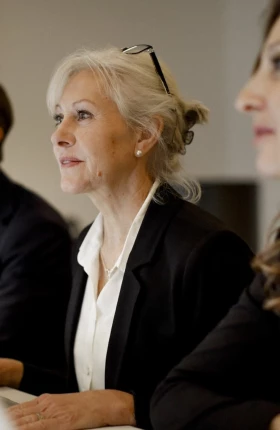About 100 senior Euro 500 executives from more than 20 countries convened in Versailles for BCG’s eighth European Strategy Leadership Summit. The theme—“Navigating the Future: New Realities in Business, Geopolitics, and Technology”—could not have been more timely. The sense that emerged was that while business leaders face disruption on many fronts—shifts in political leadership, challenges to the long-standing consensus on free trade and globalization, and the rise of new technologies such as artificial intelligence and robotics—the best strategy is engagement, not retreat. Here are eight takeaways from the event.
- Data is the new experience. The experience curve can be a powerful source of advantage, but traditionally its value has been attenuated by the diffusion of learning among competitors. According to BCG Fellow Philip Evans, the rise of artificial intelligence creates a new and more durable kind of learning-based advantage. What limits the progress of AI applications is not algorithms, he argued, but the data to feed them. For critical AI advances, the algorithm was known long before the problem was solved, but the missing ingredient was data on which the algorithm could be trained. Consider image recognition. The mathematics of “convolutional neural networks” was understood in the 1990s, but only after 2010, with the release of a corpus of 1.5 million labeled images, could researchers achieve usable results. The lesson for business leaders? Where AI creates business value, the winner will be the company that gets the data first and uses it to generate superior competitive insights. Better insights lead to greater market share and therefore to advantage in collecting even more data. A virtuous cycle. And this learning cannot walk out the door.
- Globalization is not dead; it is just evolving. The “globalization is in retreat” narrative is overly simplistic and ultimately self-defeating, according to BCG Fellow Arindam Bhattacharya. After all, emerging markets represent a disproportionate share of future growth. But while globalization is not dead, Bhattacharya argued that it is changing in three ways: From a unipolar economic model—led largely by the US—that drove relatively consistent economic performance across emerging markets to a multipolar one in which emerging market performance will diverge. From a business model centered on the flow of goods and capital via integrated global supply chains to a more decentralized one bound together digitally. And from a G7-led political model with common “rules of the game” to one characterized by greater economic nationalism and state capitalism. This evolution calls for more careful and strategic assessment of the relative attractiveness of emerging markets, more thoughtful decisions about the shape of the delivery footprint across local markets, and more flexible and customer-centric organizations.
- The relationship between emerging and mature markets is being renegotiated. “We need a conversation,” stated panelist Donald Kaberuka, the former president of the African Development Bank. His sentiments were echoed by John Wong, BCG’s chairman for Greater China, who noted that while the key multilateral institutions have historically prioritized the interests of the developed world, it may be time for a rebalancing given the importance of developing countries as engines of global growth. And with many developing nations focused on strengthening both their domestic markets and their domestic companies, it’s critical for traditional multinationals to find new ways to capture that demand and Dueling with Lions: Playing the New Game of Business Success in Africa in both developing and developed markets.
- Expect a clash between AI “haves” and “have nots.” Now that many problems in machine vision, language processing, and speech have been solved cost-effectively, the relevance of AI has extended from the lab bench to the boardroom. Applications as diverse as mobility, diagnostics, robotics, and insurance are proliferating, creating an imperative for every decision maker to develop both familiarity and comfort with AI. Instead, according to Philipp Gerbert, a BCG Fellow focused on the impact of AI on business, there is huge variation in the understanding, pace, and decisiveness with which companies are incorporating AI into their strategies, processes, and offerings. Given that first-mover advantage can be decisive, with players gaining privileged access to critical data and building competitively superior AI capabilities, Gerbert expects AI to drive significant shifts in competitive positions in the coming years.
- Traditional planning processes need to become “always-on.” With change coming so rapidly from so many directions—technology, public policy, and the rise of agile new competitors, to name a few—companies are complementing their traditional annual planning process with an always-on approach to strategy, noted BCG Fellow Nicolas Kachaner. Paired with a slimmed-down annual process, always-on strategy comprises a radar function to sense disruption and opportunity, a regular cadence of meetings to review priority strategic issues and make decisions, and an implementation management component to ensure that strategic initiatives stay on track. Federico Lalatta Costerbosa, the executive vice president for global strategy and corporate development at InterContinental Hotels Group described how always-on works at IHG.
- Business has a pivotal role to play in addressing society’s challenges. A number of speakers encouraged participants to find sustainable ways to enhance competitive advantage. Nobel Peace Prize Laureate Muhammad Yunus, the founder of Grameen Bank, shared his experience and challenged others to create social businesses. BCG’s Doug Beal—in a joint session with Professor Yunus and Saskia Bruysten, the CEO of Yunus Social Business—argued that disconnected corporate social responsibility initiatives should be replaced by a focus on corporate social value that seeks to drive initiatives at the intersection of corporate longevity, shareholder value creation, and social value creation. Professor Knut Haanaes of IMD in Switzerland echoed the theme in his session on corporate renewal and sustainability, arguing that the best sustainability strategies are those that comply broadly but invest narrowly on the basis of a “business case” that ties sustainability to competitive advantage.
- The domestic markets of emerging nations still offer very attractive opportunities—and new rivals. BCG’s John Wong shared the fact that China will generate $1.8 trillion of additional consumption by 2021—an amount roughly equivalent to total consumption in Germany today. And BCG Fellow Abheek Singhi described how the acceleration of digital adoption in emerging markets is approaching and in some cases surpassing the pace in developed ones. Emerging markets are home to 1.5 billion internet users, 90% of whom have mobile access—and in China and India alone, e-commerce represents, at a minimum, an $800 billion market. Growth in emerging markets also comes with the rise of strong and agile local champions. In Africa, for example, a new generation of pan-African entrepreneurs is challenging the leadership of global multinationals through better adaptation to local market realities. Business leaders ignore these opportunities and risks at their peril.
- Despite the uncertainty, there is reason for optimism—and action. At the close of the Summit, BCG’s chairman, Hans-Paul Bürkner, reminded participants that the world today is in better shape than ever before, with fewer people hungry, more girls and boys going to school, longer life expectancies, and fewer dying in wars and civil wars. But our work is not done. He argued that in the face of so many opportunities, many of which had been discussed during the day, business leaders need to embrace the world as it is and to strike the right balance between improving the returns of their existing business and exploring the ideas that will drive tomorrow’s growth. Doing so will take courage and persistence, but it is the key to corporate longevity.





